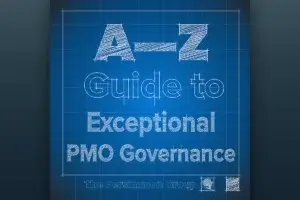As project managers, we talk a lot about the importance of lessons learned—but how many of us regularly take time to reflect on our own personal lessons? I’ve worked on projects of different sizes across several industries, with objectives ranging from “keeping the lights on” to “transformational efforts”, and each has left me with a new perspective. Of the lessons I’ve learned, which ones would I go back and tell myself before becoming a project manager? It was a tough list to narrow, but here are the ones I would pull out of the Time Machine:
-
Maintaining aligned focus is HARD.
Before I became a project manager, I hadn’t observed quite so clearly that keeping a team focused on a shared vision and set of outcomes is really hard work. Early in my career, I found myself completing the important tasks of describing project objectives, defining project scope, and listing what we hoped to gain from the project – and then tucking my charter away into the project files. Over time, the team would slowly lose shared priorities and goals, and they would end up working on the wrong things or making decisions that didn’t align with what we hoped to gain. What gives?
So often in projects, particularly long ones, we end up taking unexpected paths and encountering obstacles we didn’t anticipate. This can shift focus for the team. A key job of a project manager is to keep the team’s eye on the prize: Remember why we started this project in the first place, along with all the great benefits we hope to realize when it is over. This helps keep the team more unified and thinking along similar lines when times get tough.
-
Know when enough is enough.
Before I formally ran projects, I didn’t realize that, despite an organization’s best efforts to vet initiatives, not all projects continue to make sense after they’re started. Once a team kicks off a project and invests in the early project work, (i.e., defining the scope, gathering requirements, and building out the design) they begin to see the project vision take shape into something tangible. Like the rest of the team, I wanted to champion these projects and the goals they sought to realize.
All projects hit unexpected challenges, though, and making the decision to consider the project’s viability after the team has invested can be really, really tough. On one on my first projects, the team was so focused on not losing the effort we had already spent on project planning that we continued to work on the project for several more months. In reality, we were spinning our wheels on an effort that ultimately no longer made sense due to a key misunderstanding of organizational priorities. The only thing worse than losing the time we had spent was losing even more time, and we would have avoided this if we had known when to evaluate if the project no longer made sense. [Through our Surviving Project Management class, you’ll learn some of the evaluation measures, or “kill criteria”, that often indicate a project needs to be re-evaluated.]
-
Perception matters as much as intent and action.
In most of the environments I’ve worked in, there have been constraints that prevent every project from being worked on and, in some cases, projects from completing as quickly or completely as may be desired. This often creates a politically charged environment with stakeholders that have an interest in what’s being prioritized and why. As a green project manager, I focused on my project because it was considered a priority by the organization, but I missed the perceived impacts of my projects.
Over time, I learned that there are many who will have a perception about your project: i.e., it’s taking funding that could be used on something else; it’s not that important, or it’s tying up valuable team members. By being plugged in to how others in the organization view your project, you can help mitigate these issues by figuring out how to address and meet with those who have concerns. It could be as simple as keeping them informed on your project’s progress or explaining some of the benefits of the project that they may not be seeing. [In the upcoming class, we’ll talk through some of the ways stakeholders may perceive themselves to be impacted by a project and how best to bring them into the fold.]
-
Technical project management (schedules, financials, decision log, etc.) is only the first phase of the job – the rest is in your approach.
As a new project manager, the tools at your disposal can be both overwhelming and reassuring. There is a ton of documentation to manage to help guide your team to success: a project schedule, your RAAID log, project changes requests, financial forecasts, stakeholder registers, and more. These are necessary tools to meet a project’s goals, but is that really all that you need to get to the finish line? Pretty quickly, I learned that it was only half the battle.
While the technical side of project management – the science – is absolutely necessary to managing your project, the approach you take to your project – the art – is just as important. Helping the project team to be successful through negotiating priorities and deadlines, removing roadblocks, settling disputes, and communicating effectively (and often!) is what will really help you to deliver your projects. [At The Persimmon Group, our Surviving Project Management course is focused on the art of project management because we see the value that these soft skills bring to navigating project environments and their complexities.]
-
Leading a team – and building trust – is a tall order.
Before I became a project manager, I wish I had known that building trust with the team and enabling them to meet the project goals is really hard work. Being successful in a leadership role requires that you’re plugged in to what your team needs to be successful; you’ve put team members in a position to meet objectives, and you’ve helped them get needed resources. For most project managers, you must accomplish all that based purely on your ability to influence the project team and leaders in the organization … and that is not an easy task.
To gain trust with your team, you often must go through rough patches of establishing norms and learning how to work together. Because project teams don’t always work together consistently, but are assembled to achieve project objectives, they can have volatile periods early on where they are figuring each other out. Getting past these periods require consistent support, patience, and conflict resolution, but putting the hard work in during the rough patches can help build trust with your team. Communicating effectively and transparently is another huge part to building and maintaining trust, and I quickly learned that this is where a lot of a project managers time is focused.
One of the key concepts that our Surviving Project Management class focuses on are some of the foundational ways you can manage team dynamics, communicate like a pro, and build trust as a leader. There’s no template that you can apply to every project to be successful, but there are some key concepts that would have been great to know before I started managing projects to save me a lot of tough lessons. Every project and team that I’ve worked with has taught me something new, and I know that my toolkit will continue to develop as I grow throughout my career.









